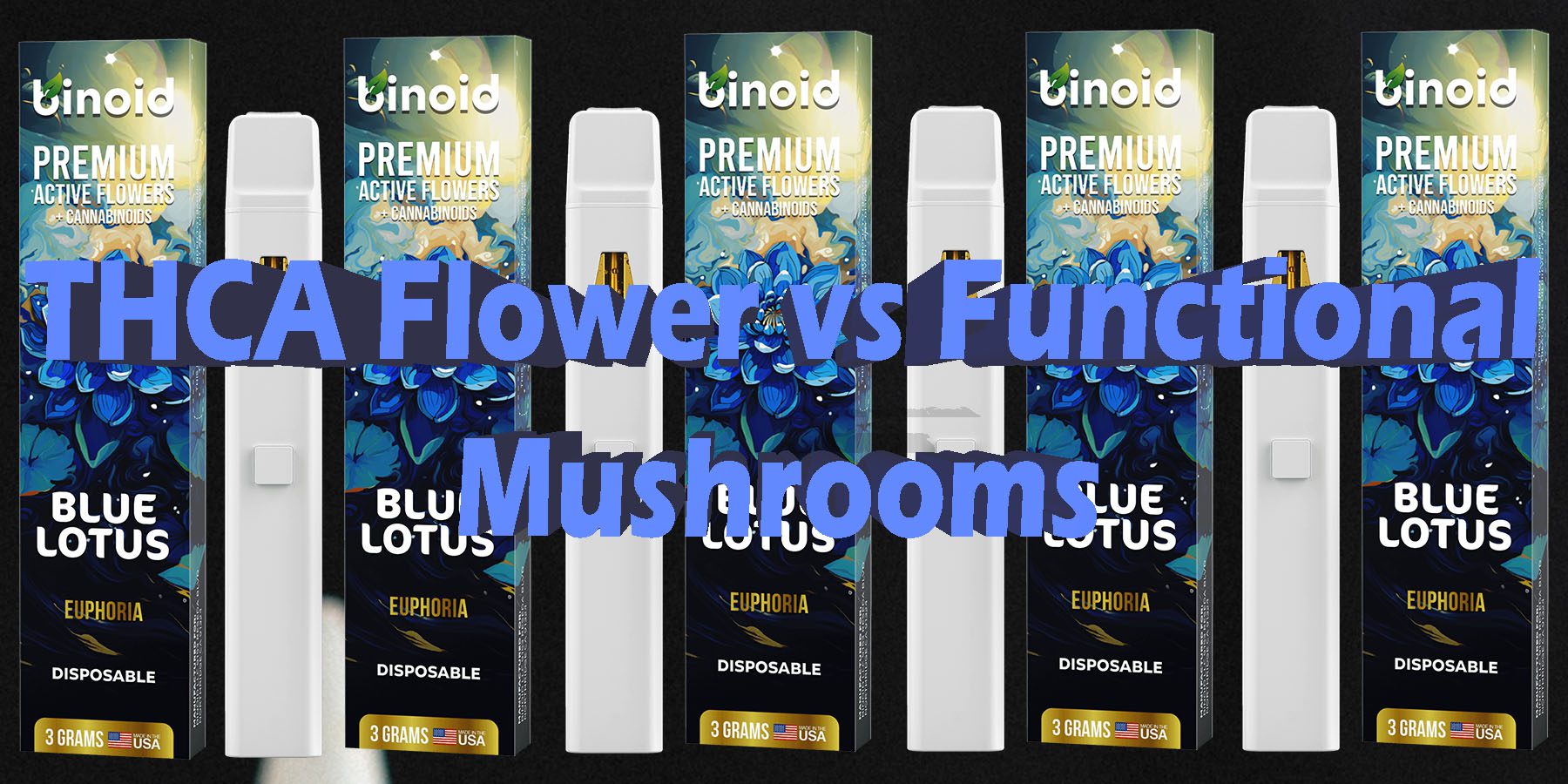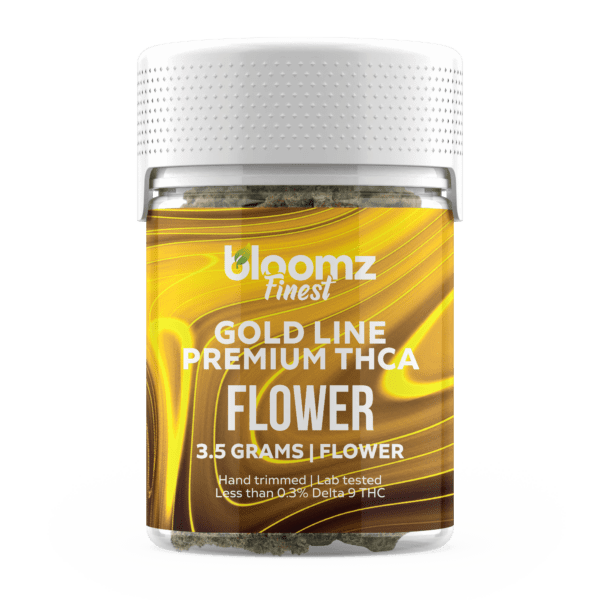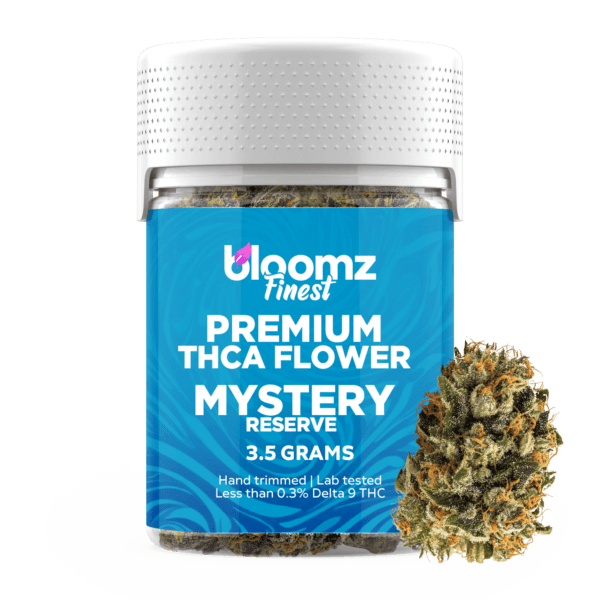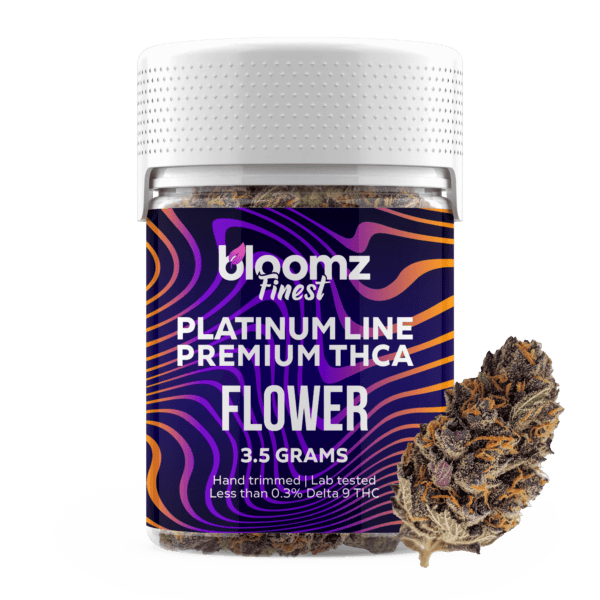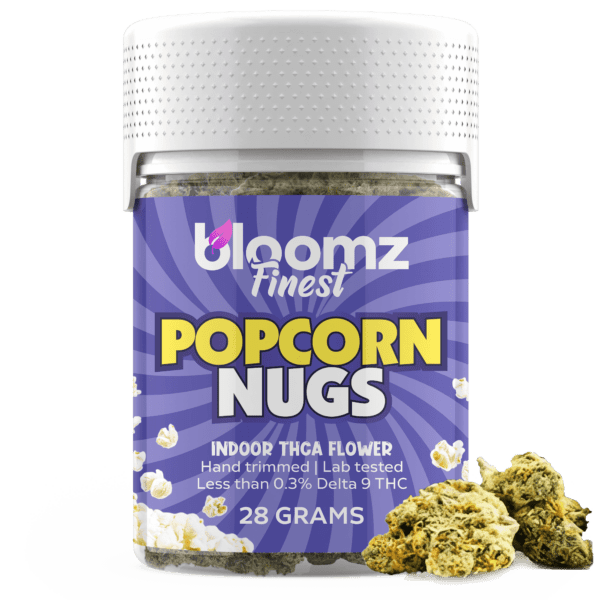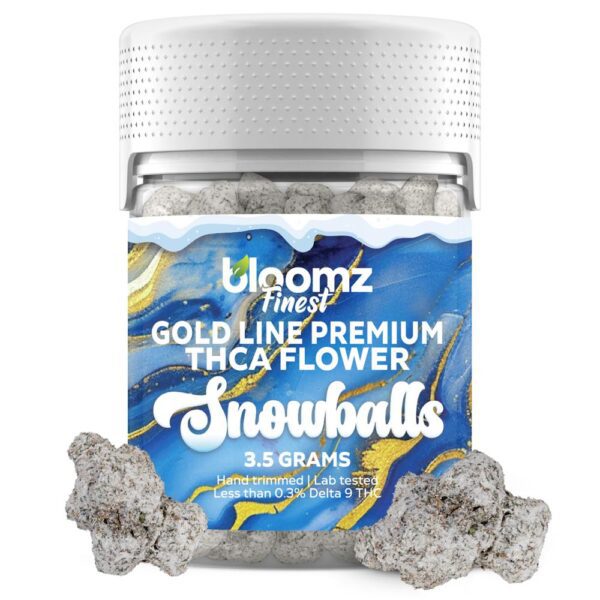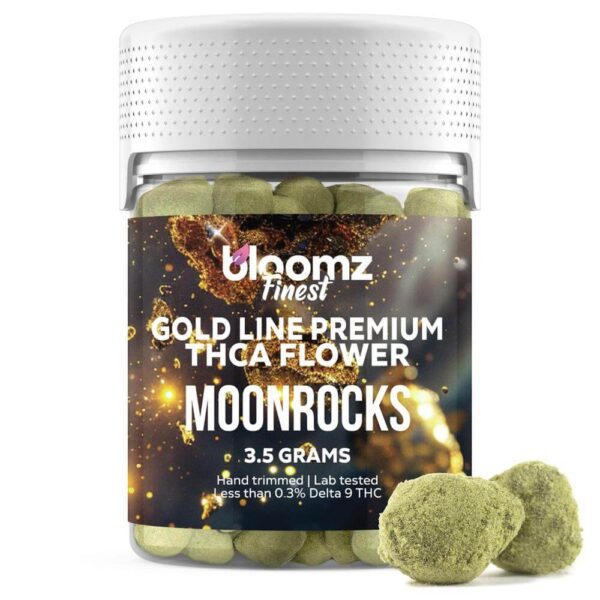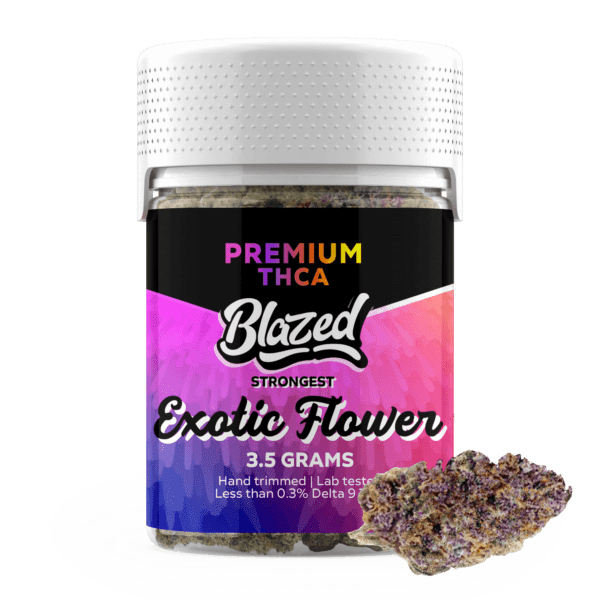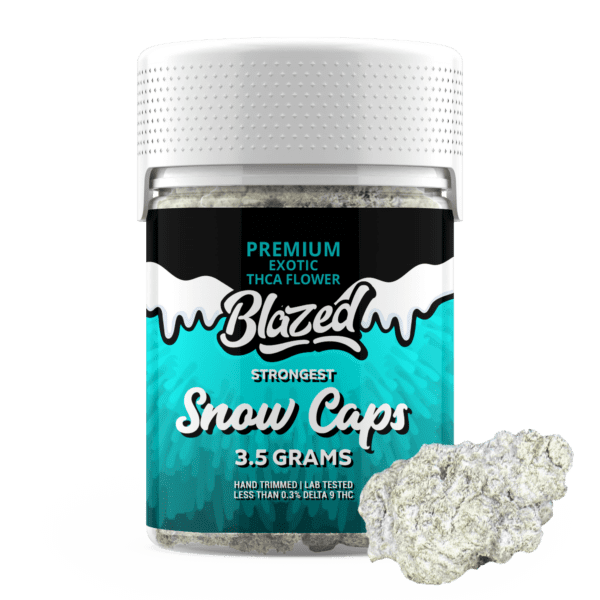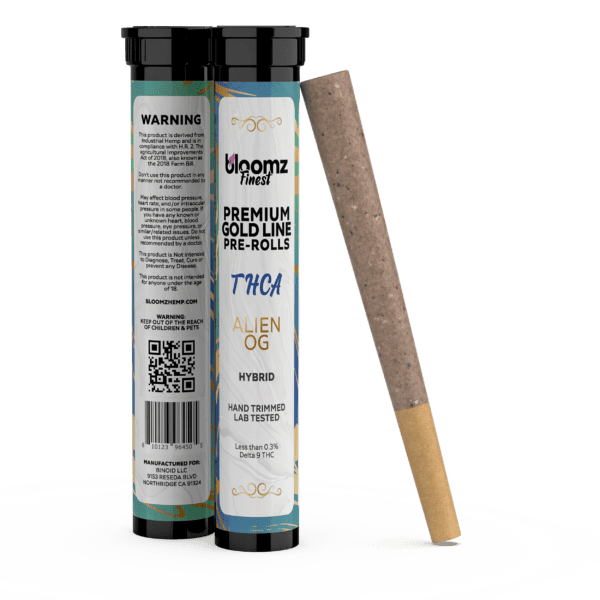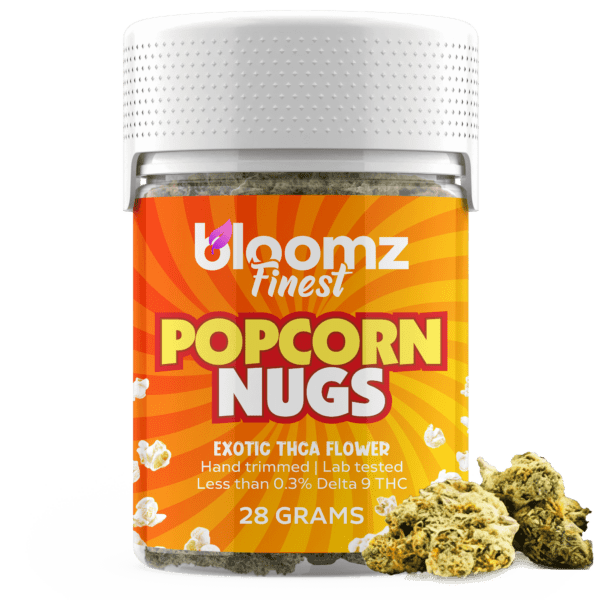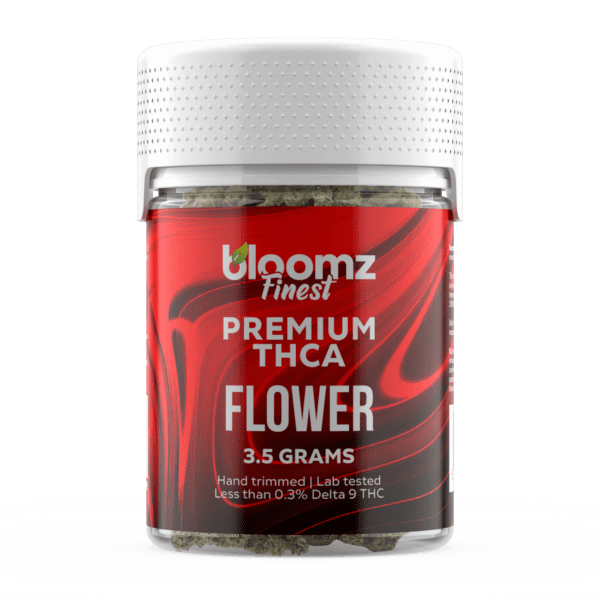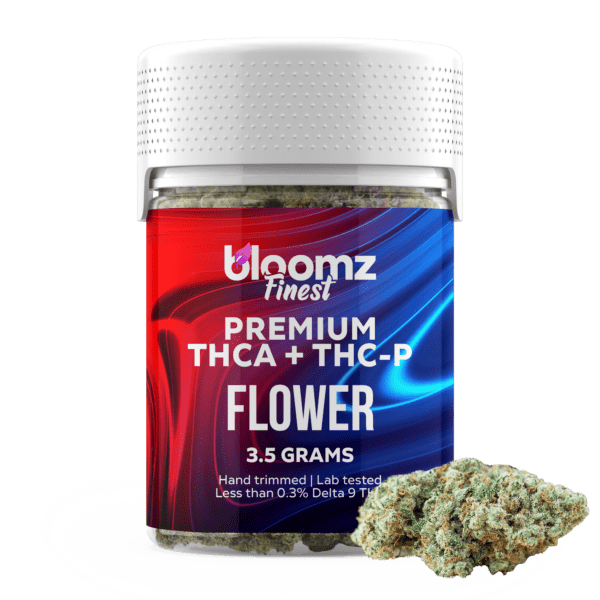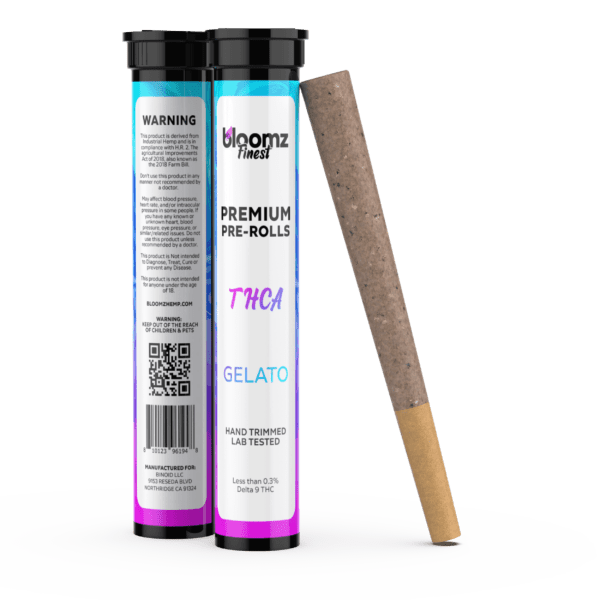In the grand and verdant theater of the natural world, a diverse cast of plants and fungi have long played pivotal roles in the human story, offering everything from sustenance and shelter to profound shifts in consciousness and foundational support for our well-being. Today, as we navigate a modern landscape rich with natural choices, two particularly compelling categories have captured our collective curiosity, each hailing from a different kingdom of life and offering a fundamentally different promise.
In one corner stands the shimmering, aromatic THCA flower, a marvel of botanical cultivation derived from the cannabis plant, known for its potential to unlock a world of euphoria and deep relaxation. In the other, we find the quiet and steadfast family of functional mushrooms, ancient allies from the fungal kingdom, revered not for altering the mind but for nourishing the body and supporting its intricate systems. This exploration is not a contest between two similar contenders, but a deep dive into two entirely different philosophies of natural wellness: one of immediate, perceptible experience and the other of subtle, cumulative support.
To Buy THCA Flower Click Here
Recommended products
-
THCA Flower – Indoor Exotics – Gold Line
$37.99$69.99 -
THCA Flower – Mystery Reserve
$41.99$79.99 -
THCA Flower – Platinum Line
$49.99$79.99 -
THCA Smalls
$149.99$256.99
Why It’s Important to Breakdown the Matchup of THCA Flower vs. Functional Mushrooms
In an era flooded with wellness trends and a dizzying array of natural products, the necessity for clear, precise, and fundamental distinctions has never been more critical. The comparison between THCA flower and functional mushrooms is perhaps one of the most important breakdowns to undertake, as it serves to separate two categories that are frequently misunderstood by newcomers to the space. Lumping them together under a generic “natural products” banner is not just inaccurate; it’s a foundational error that could lead to profound disappointment or even unintended consequences.
A detailed matchup is essential to dismantle the misconception that all popular fungi or plant-derived products offer similar experiences. It is a vital exercise in clarifying intent, demystifying pharmacology, and drawing a bright, clear line between psychoactivity and non-psychoactive support.
The absolute core of this importance lies in the diametrically opposed nature of their effects. THCA flower is sought after specifically for its ability to convert into Delta 9 THC, a potent psychoactive compound that elicits an immediate and noticeable change in one’s state of consciousness—a “high.” The entire purpose is to alter perception, mood, and sensory experience in the short term. Functional mushrooms, on the other hand, are defined by their complete lack of psychoactive effects.
Their benefits are subtle, cumulative, and work in the background, aiming to support the body’s systems over days, weeks, and months. Mistaking one for the other means the difference between preparing for an evening of blissful relaxation and expecting a daily supplement to provide a similar, immediate rush—an impossible and misguided expectation that undermines the true purpose of both.
Furthermore, this breakdown is crucial for navigating their entirely different legal and regulatory landscapes. THCA flower exists within a complex and often confusing legal gray area, made possible by the 2018 Farm Bill, but subject to a patchwork of state-level restrictions and the ever-present risk of legislative change. Functional mushrooms, in stark contrast, are federally legal throughout the United States.
They are classified as food or dietary supplements, containing no controlled substances, and can be bought, sold, and consumed with the same legal standing as culinary mushrooms like Portobello or supplements like Vitamin C. Understanding this fundamental legal divide is essential for any consumer to make choices that align with their personal comfort level and local laws.
Finally, this comparison highlights two distinct approaches to incorporating natural products into one’s life. THCA flower is typically used episodically, for recreation, social connection, or specific moments of desired release and relaxation. Functional mushrooms are intended for consistent, daily use, much like a multi-vitamin or a healthy dietary habit, with the goal of building a foundation of long-term wellness and resilience. By clearly delineating these separate use cases, we empower individuals to choose the right tool for the right job, appreciating each for its unique contribution—one as a key for unlocking a temporary state of being, and the other as a building block for a sustained state of well-being.
Contender #1: THCA Flower
Emerging from the ever-evolving world of cannabis cultivation and science, THCA flower has rapidly carved out a significant niche for itself, representing a fascinating intersection of botanical tradition and modern legal frameworks. It stands as a testament to the ingenuity of growers and the intricate chemistry of the cannabis plant, offering an experience that is both timelessly familiar and refreshingly new. To the uninitiated eye, a bud of high-quality THCA flower is indistinguishable from its more restricted marijuana counterpart, boasting the same vibrant colors, complex aromas, and sparkling coat of crystalline trichomes.
This striking similarity is no coincidence; it is the result of meticulous breeding and cultivation practices aimed at maximizing one specific compound while adhering to a strict legal standard. THCA flower is not a synthetic product or a lesser version of a classic; it is a genuine, high-potency cannabis flower that operates within a unique legal space, making it one of the most talked-about and sought-after products in the modern hemp market. Its story is one of chemistry, legal interpretation, and the relentless pursuit of quality by a dedicated community of cultivators.
At its core, the phenomenon of THCA flower revolves around a single molecule: Tetrahydrocannabinolic acid (THCA) – a non-psychoactive acidic precursor to the famous Delta 9 THC. In the living cannabis plant, this is the primary form in which the cannabinoid exists. Think of THCA as Delta 9 THC in a dormant state, possessing a different molecular structure that includes an extra carboxyl ring. This additional ring prevents the molecule from binding effectively with the CB1 receptors in the brain, the interaction responsible for the intoxicating effects associated with cannabis. It is for this reason that consuming raw, unheated cannabis does not produce a significant psychoactive experience. The magic, as it were, lies in a process called “decarboxylation”.
When THCA is exposed to heat—through smoking, vaping, or cooking—it loses that extra carboxyl ring and is converted into the psychoactive Delta 9 THC. This transformation is the entire basis upon which THCA flower’s effects are built, a simple chemical reaction that unlocks the plant’s full potential.
Recommended products
So, what exactly is THCA flower, and how is it produced to walk this fine legal line? THCA flower is cannabis flower, specifically cultivated from strains that are naturally high in THCA but extremely low in Delta 9 THC at the time of harvest. According to the 2018 Farm Bill, hemp is legally defined as a cannabis plant containing no more than 0.3% Delta 9 THC by dry weight. Savvy cultivators have leveraged this definition by breeding strains that produce vast quantities of THCA while keeping the Delta 9 THC levels below the legal threshold. The production process is a delicate art and science, requiring precision at every stage to ensure a high-quality, compliant final product:
Genetic Selection: The process begins with choosing the right genetics. Cultivators select cannabis strains known for their robust trichome production and high THCA potential. These are often iconic, high-potency strains that are carefully bred over generations to express the desired cannabinoid profile, specifically minimizing the natural degradation of THCA into Delta 9 THC while the plant is growing.
Controlled Cultivation: The plants are typically grown in highly controlled indoor or greenhouse environments. This allows growers to manage every variable—light cycles, temperature, humidity, and nutrients—to optimize the plant’s health and maximize trichome development. Stressing the plant in specific ways can encourage resin production, leading to higher concentrations of cannabinoids like THCA.
Precision Harvesting: The timing of the harvest is absolutely critical. Growers must harvest the plants at their peak maturity, just before the natural degradation process or exposure to environmental heat and light could convert a significant amount of THCA into Delta 9 THC, potentially pushing the flower over the legal 0.3% limit.
Careful Curing: After harvesting, the flower is carefully dried and cured. This is a slow process designed to remove moisture while preserving the delicate cannabinoids and terpenes. The curing environment is kept cool and dark to prevent premature decarboxylation and maintain the flower’s legal status, all while enhancing its aroma and flavor.
Compliance Testing: Before hitting the market, reputable brands send samples of their flower to third-party laboratories for comprehensive testing. This analysis confirms the flower’s cannabinoid profile, ensuring it is below the 0.3% Delta 9 THC threshold, and also screens for pesticides, heavy metals, and other contaminants, guaranteeing a safe and compliant product for the consumer.
The market for THCA flower is incredibly diverse, offering a wide spectrum of types and categories to suit every preference and budget. This variety reflects the maturity of the cannabis cultivation industry and the discerning tastes of consumers who look for specific qualities in their flower. From the environment it was grown in to the way it is processed and presented, each category offers a unique set of characteristics. Understanding these distinctions is key to navigating the options and finding the perfect product to match one’s desired experience, whether that’s the pinnacle of aromatic intensity or the simple convenience of a ready-to-use format.
This granular level of choice allows users to tailor their experience with a precision that was once unimaginable in the broader market:
Indoor THCA Flower: Considered the gold standard by many connoisseurs, indoor-grown THCA flower is cultivated in completely controlled environments. This method gives growers god-like control over every aspect of the plant’s life, from the exact spectrum of light it receives to the precise humidity and CO2 levels in the air. The result is typically a visually stunning product with dense, perfectly formed buds, a thick coating of crystalline trichomes, and an intensely pungent aroma. Indoor flower often commands a higher price due to the significant energy and infrastructure costs involved, but for those seeking maximum potency and the most vibrant terpene profiles, it is often considered the pinnacle of quality.
Outdoor THCA Flower: Grown under the natural sun, outdoor THCA flower embodies a more traditional and sustainable approach to cultivation. These plants grow larger and produce buds that can be less dense than their indoor counterparts, but they often possess a unique and complex character influenced by the natural terroir—the soil, climate, and environment in which they were grown. While sometimes less visually perfect, high-quality outdoor flower can offer a rich, full-bodied flavor profile and robust effects. It is also generally more affordable, making it an excellent choice for budget-conscious consumers who appreciate a more rustic, sun-grown product.
THCA Smalls: This category refers not to a specific growing method but to the size of the buds. “Smalls” are smaller, pea-sized or popcorn-sized nuggets of flower that are often separated from the larger, premium colas during the trimming and sorting process. They come from the same high-quality plants as the larger buds and possess the same potency and terpene profile, but are offered at a lower price point due to their less commanding visual appeal. THCA smalls are a fantastic value proposition, providing access to top-shelf genetics without the premium price tag of the top colas.
THCA Nugs: “Nugs” is a colloquial term for the standard, trimmed buds of the cannabis plant. This is the most common form in which THCA flower is sold. These are the well-formed, manicured pieces of flower that represent the main harvest of the plant’s colas (the large clusters of buds at the top of the plant). The quality can range from outdoor to top-shelf indoor, but the term itself simply refers to the classic, ready-to-use form of the flower that most people picture when they think of cannabis.
THCA Snowballs/Snow Caps: This is a more specialized and potent category of THCA flower. A THCA Snowball starts as a premium bud of THCA flower that is then coated in or rolled in pure THCA isolate, a crystalline powder that is nearly 100% pure THCA. This process dramatically increases the overall THCA content of the flower, giving it a unique, frosted or “snow-dusted” appearance. The resulting product is incredibly potent and is intended for experienced users seeking a particularly powerful effect upon decarboxylation.
THCA Moonrocks: Taking the concept of infused flower a step further, THCA Moonrocks are a trifecta of potency. They are created by taking a high-quality nug of THCA flower, coating it in a sticky cannabis concentrate or oil (often one that is also high in THCA), and then rolling the entire sticky concoction in a generous layer of kief (the collected trichomes from cannabis flower). The result is a dense, heavy, and extraordinarily potent product that is best consumed by breaking it apart and smoking it in a bowl or pipe, as it can be too sticky for grinders.
THCA Pre-Rolls, Blunts & Joints: For consumers seeking ultimate convenience, the market offers a wide array of pre-prepared smokable options. THCA Pre-Rolls or Joints consist of ground THCA flower rolled in a thin paper, often with a filter tip. THCA Blunts are similar but use a larger wrap made from tobacco leaves or hemp, which can impart its own unique flavor and a slower burn. These products eliminate the need for grinding, rolling, or packing, offering a grab-and-go solution that is perfect for social settings or for those who prefer not to handle the flower directly.
Exotic THCA Flower: The term “Exotic” typically refers to rare, highly sought-after, and genetically unique strains. These are often the result of extensive breeding projects by master cultivators, resulting in novel combinations of color, aroma, flavor, and bud structure. An exotic strain might feature deep purple or bright orange hues, smell of tropical fruits or sweet desserts, and have a density and trichome coverage that sets it apart from more common varieties. They are prized for their uniqueness and complex terpene profiles.
AA Exotic THCA Flower: In the informal grading system used by many enthusiasts and dispensaries, “AA” represents a mid-grade flower. It’s a solid, enjoyable product, but it may lack the visual “bag appeal” of higher grades. The buds might be slightly less dense, the trim a little less perfect, or the aroma not quite as pungent. It’s often a reliable and affordable option that gets the job done without the bells and whistles of the top-shelf tiers.
AAA Exotic THCA Flower: “AAA,” or “trips,” is considered the standard for high-quality cannabis. This flower exhibits all the desirable characteristics: good bud density, a visible and generous coating of trichomes, a strong and pleasant aroma, and a clean trim. It represents a well-grown, potent product that will satisfy the vast majority of consumers. Most of the reputable flower on the market falls into this or the subsequent category.
AAAA Exotic THCA Flower: “AAAA,” also known as “quads,” represents the pinnacle of cannabis cultivation—the true top-shelf. This flower is virtually flawless. It features rock-hard, dense buds that are meticulously trimmed, an overwhelming and complex terpene profile that fills the room, and a layer of trichomes so thick that the flower sparkles under the light. The colors are vibrant, the structure is perfect, and the overall experience is considered the best of the best, commanding the highest price and offering the most premium experience.
Just as important as the type of THCA flower is the specific strain, which is broadly categorized into Indica, Sativa, and Hybrid. These classifications are a traditional way of predicting the potential effects of a particular variety, based on its genetic lineage and, more scientifically, its typical cannabinoid and terpene profile. While every individual’s experience can vary, these categories serve as a useful starting point for consumers looking to tailor their experience toward a specific mood or activity.
The nuanced differences between them are what give the world of cannabis its incredible depth and variety, allowing users to find a strain that resonates perfectly with their personal chemistry and desired outcome:
Indica: Traditionally associated with plants originating from the Hindu Kush mountain region, Indica strains are known for their short, bushy stature and broad leaves. In terms of effects, they are renowned for producing a deeply relaxing and sedative experience, often referred to as a “body high.” The feelings are typically centered on physical sensations, promoting a sense of calm, comfort, and tranquility that can lead to a state of blissful repose. Terpenes commonly found in Indica strains, such as myrcene, are often associated with these calming and soothing effects. Users often choose Indica strains for evening use, to unwind after a long day, or to settle into a chilled-out, meditative state.
Sativa: Sativa strains typically originate in equatorial regions and are characterized by their tall, lanky plant structure and thin leaves. The experience associated with Sativas is often the polar opposite of Indicas. They are known for producing an energizing, uplifting, and cerebral effect, often described as a “head high.” This can manifest as a surge in creativity, focus, and sociability, making them a popular choice for daytime activities, creative projects, or social gatherings. Common terpenes in Sativas like limonene and pinene are often linked to these invigorating and mood-lifting qualities. The experience is typically more about mental stimulation than physical relaxation.
Hybrid: As the name suggests, Hybrid strains are the result of crossbreeding Indica and Sativa plants. They represent the vast majority of strains available on the market today and offer a balanced spectrum of effects that can be tailored to specific desires. Hybrids can be Indica-dominant, Sativa-dominant, or a true 50/50 mix. This allows cultivators to create strains that provide the best of both worlds—for example, a strain that offers a feeling of euphoria and mental clarity alongside a comfortable sense of body relaxation without being overly sedative. The specific effects of a hybrid depend entirely on its unique genetic parentage and resulting terpene profile, offering an almost endless variety of nuanced experiences.
THCA flower’s legality here in the U.S. is one of the most discussed and debated topics in the cannabinoid industry. Its existence is a direct result of the language used in the 2018 Agriculture Improvement Act, more commonly known as the 2018 Farm Bill. This landmark piece of legislation federally legalized the cultivation and sale of hemp, which it defined as the cannabis sativa L. plant with a Delta 9 THC concentration of not more than 0.3 percent on a dry weight basis. Critically, the law did not place a limit on the concentration of THCA. This omission created a legal loophole: as long as a cannabis flower contains less than 0.3% Delta 9 THC at the time of testing, it is legally considered hemp and can be sold in many states, regardless of its THCA content.
This allows consumers to purchase a product that is, for all intents and purposes, high-potency cannabis, as the THCA will readily convert to Delta 9 THC when heated. However, it is a legal gray area, and some states have enacted their own laws that use a “total THC” standard (calculating the potential Delta 9 THC from the THCA content), making THCA flower illegal in those jurisdictions. Therefore, while federally permissible under the current interpretation, its legality can vary significantly from state to state, and consumers must remain aware of their local regulations.
The purposes for using THCA flower are as diverse as its strains, with consumption methods that allow for a range of experiences and levels of intensity. The choice of method often comes down to personal preference, desired onset time, and the specific tools available. Each technique interacts with the flower differently, particularly in how it applies the heat necessary for decarboxylation, which in turn influences the flavor, smoothness, and overall character of the experience. From traditional methods that have been used for centuries to modern technological advancements, users have a variety of ways to engage with this versatile plant.
Vaping (using a portable or desktop vaporizer): Vaping has become an increasingly popular method for consuming cannabis flower. A vaporizer heats the THCA flower to a precise temperature, hot enough to decarboxylate the THCA into Delta 9 THC and vaporize the cannabinoids and terpenes, but not hot enough to cause combustion. This process avoids the creation of smoke and many of the harsh byproducts associated with burning plant material. The result is a smoother, cleaner, and more flavorful experience that allows the user to taste the nuanced terpene profile of the strain. Vaporizers also offer a high degree of efficiency and control, as different compounds vaporize at different temperatures, allowing for a more tailored session.
Smoking: This is the most traditional and widely recognized method of cannabis consumption. It involves the direct combustion of the plant material, inhaling the resulting smoke. Common methods include rolling the ground flower into a joint (in a paper) or blunt (in a hemp or tobacco wrap), or packing it into the bowl of a pipe, bong, or bubbler. Smoking provides a rapid onset of effects and a ritualistic experience that many users enjoy. The high heat of combustion ensures a full and instantaneous conversion of THCA to Delta 9 THC, delivering a potent and immediate effect.
Cooking/Baking: THCA flower can also be used to create a wide variety of edibles, from brownies and cookies to savory dishes and infused oils. This method requires a crucial first step: decarboxylation. Before infusing it into a recipe, the flower must be heated at a low temperature in an oven for a period of time (e.g., 240°F for 30-40 minutes) to convert the THCA into Delta 9 THC. Once decarboxylated, the flower can be infused into a fat source like butter or oil, which is then used in the recipe. Edibles produce a much more potent and long-lasting effect than inhalation methods because the THC is processed by the liver, which converts it into an even more powerful compound called 11-hydroxy-THC. The onset is much slower (30 minutes to 2 hours), but the experience can last for many hours.
The effects of using THCA flower are, ultimately, the effects of Delta 9 THC, as the conversion is the entire point of consumption for most users. Once the heat is applied and the transformation occurs, the resulting Delta 9 THC interacts with the body’s endocannabinoid system (ECS), primarily binding to the CB1 receptors in the brain and nervous system. This interaction is what produces the well-known suite of psychoactive effects associated with cannabis. Users can expect a significant shift in consciousness and perception, often characterized by a profound sense of euphoria and an uplifted mood.
Thoughts may become more creative and expansive, and there is often a heightened appreciation for sensory inputs like music, food, and art. On the physical side, a deep sense of relaxation and bodily comfort is common, particularly with Indica-dominant strains. The experience is multifaceted, capable of inspiring introspection, social connection, or serene contentment, all depending on the strain, dosage, individual’s mindset, and surrounding environment.
Pros & Cons
When evaluating THCA flower, it’s beneficial to look at its profile through a balanced lens, acknowledging both the compelling advantages that have driven its popularity and the potential drawbacks that warrant consideration. This balanced perspective is crucial for any potential user to make an informed decision that aligns with their lifestyle, legal situation, and personal preferences. The product’s unique position in the market creates a specific set of pros and cons that differentiate it from other cannabis and hemp-derived products.
Pros:
Federal Legal Accessibility: The most significant advantage of THCA flower is its legal status under the 2018 Farm Bill. By containing less than 0.3% Delta 9 THC, it is classified as hemp, allowing it to be legally shipped to and sold in many states where recreational cannabis is not yet legal. This provides a pathway for individuals in those regions to access high-potency cannabis flower through a legally recognized channel, opening up a world of possibilities that were previously unavailable to them without violating state laws.
A Familiar and Authentic Experience: For those who appreciate the classic cannabis experience, THCA flower delivers in spades. Because it converts directly into Delta 9 THC upon heating, the effects are virtually identical to those of traditional marijuana. This is not a synthetic cannabinoid or a different analogue with subtly altered effects; it is the real deal, providing the authentic aroma, taste, and psychoactive journey that cannabis is known for, ensuring users receive the genuine experience they are seeking without any guesswork.
Expansive Strain and Product Variety: The THCA flower market is a direct beneficiary of decades of sophisticated cannabis breeding. This means consumers have access to an enormous library of legendary and exotic strains, each with its own unique terpene profile and nuanced effects. From classic Indicas and Sativas to a near-infinite array of complex Hybrids, the level of choice is staggering. This allows users to fine-tune their experience with incredible precision, selecting a strain that perfectly matches their desired mood or activity.
Control Over Psychoactive Activation: The two-stage nature of THCA offers a unique form of control. In its raw, unheated state, the flower is non-psychoactive and is being explored for its own set of properties. A user could, for instance, juice raw cannabis leaves for their potential wellness benefits without any intoxicating effects. The psychoactivity is entirely dependent on the user’s choice to apply heat through smoking, vaping, or cooking, giving them complete and direct control over when and if they wish to activate the flower’s potent potential.
Diverse Consumption Methods: THCA flower is incredibly versatile, lending itself to a wide range of consumption methods that cater to every possible preference. Whether one enjoys the classic ritual of smoking a joint, the clean and flavorful experience of vaping, the discretion and convenience of packing a one-hitter, or the long-lasting journey provided by homemade edibles, THCA flower can do it all. This adaptability ensures that virtually anyone can find a method of consumption that they are comfortable and familiar with.
Rich and Complex Terpene Profiles: Reputable growers of THCA flower place a heavy emphasis on preserving the plant’s natural terpenes, the aromatic compounds responsible for its distinct flavors and smells. These terpenes do more than just provide a pleasant sensory experience; they also contribute to the “entourage effect,” working synergistically with cannabinoids to modulate and enhance the overall experience. A high-quality THCA flower will offer a complex bouquet of aromas, from pine and citrus to berry and diesel, which is a hallmark of a well-cultivated and carefully cured product.
Established Industry Standards and Testing: Because it operates within the legal hemp industry, the THCA flower market benefits from a growing infrastructure of accountability. Reputable brands provide comprehensive third-party lab reports, known as Certificates of Analysis (COAs), for their products. These reports verify the cannabinoid potency, confirm legal compliance, and screen for harmful contaminants like pesticides, heavy metals, and molds, offering consumers a level of transparency and safety assurance that is crucial for peace of mind.
Rapid Onset of Effects via Inhalation: When THCA flower is smoked or vaped, the effects are felt almost instantaneously, typically within minutes. This rapid onset allows users to carefully manage their experience by taking a small amount and waiting to see how they feel before consuming more. This immediate feedback loop makes it much easier to find the right dosage and avoid the common pitfall of overconsumption, which can sometimes happen with the delayed onset of edibles.
Social and Communal Aspect: Cannabis has a long and storied history as a social lubricant, and THCA flower continues this tradition. The rituals associated with its consumption—sharing a joint among friends, gathering around a table to pack a bowl, or simply enjoying a relaxed conversation in an altered state—are deeply ingrained in cultural practice. It can serve as a catalyst for bonding, laughter, and shared experiences, fostering a sense of community and connection among users in a way that is both timeless and profound.
Potential for Precise Dosing with Technology: The advent of sophisticated dry herb vaporizers has brought a new level of precision to consuming flower. Many modern vaporizers allow for exact temperature control, which can be used to target specific cannabinoids and terpenes that vaporize at different boiling points. This technological advancement allows discerning users to experiment with temperature settings to subtly alter the effects of their flower, potentially emphasizing certain desirable qualities while minimizing others, offering a highly customizable and repeatable experience.
Cons:
Complicated and Shifting Legal Landscape: The primary disadvantage of THCA flower is the precarious nature of its legality. While it may be federally compliant under the 2018 Farm Bill’s definition of hemp, many states have taken a different view, implementing “total THC” laws that effectively ban the product. This creates a confusing patchwork of regulations that can change rapidly, placing the onus on the consumer to constantly stay informed about their local laws. There is also the risk that a future federal ruling or legislative change could close the loophole that allows it to exist.
Risk of Overconsumption and Intense Effects: Because THCA flower converts into potent Delta 9 THC, there is a significant risk of overconsumption, especially for novice users or those with a low tolerance. The experience can be intensely psychoactive, and taking too much can lead to feelings of unease, paranoia, or overwhelming physical sensations. The sheer potency of modern, high-THCA strains requires a responsible and cautious approach, starting with a very small amount and waiting to assess the effects before consuming more.
Distinct and Pungent Aroma: While cannabis connoisseurs may cherish the strong, skunky, or fruity aroma of high-quality flower, this same quality makes it far from discreet. The smell of burning or even fresh THCA flower is potent and easily recognizable, which can be a major drawback for individuals who need to be mindful of their neighbors, live in shared housing, or simply wish to keep their consumption private. This lack of discretion can limit the situations in which it can be comfortably used.
Misleading Product Labeling and Quality Variance: In a rapidly growing and not-yet-fully-regulated market, the quality and accuracy of THCA flower products can vary wildly between vendors. Less scrupulous companies might misrepresent the potency of their flower, use outdated lab reports, or sell poorly grown and cured products. It is crucial for consumers to do their due diligence, purchasing only from highly reputable brands that provide transparent, up-to-date, and comprehensive third-party lab testing to ensure they are getting a safe and accurately labeled
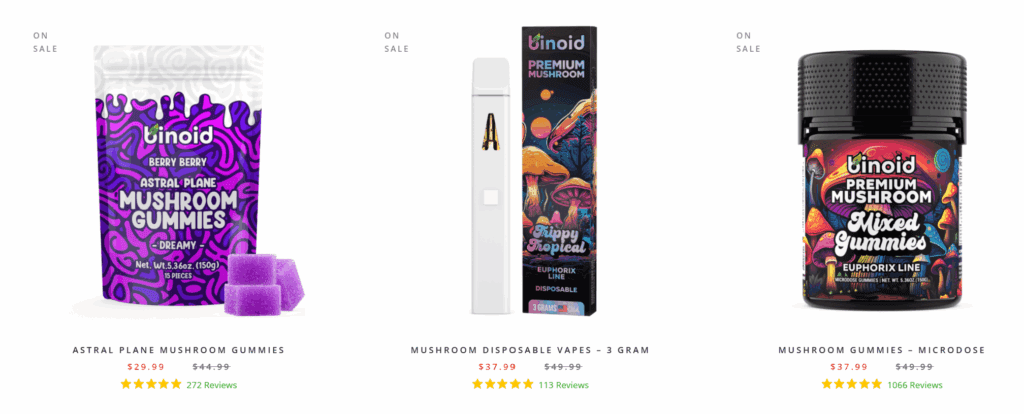
Contender #2: Functional Mushrooms
Stepping into the spotlight from the rich, diverse, and often mysterious world of mycology, functional mushrooms represent a category of fungi valued not for their psychoactive properties, but for their deep well of compounds believed to support overall health and vitality. These are the quiet powerhouses of the fungal kingdom, the great communicators and recyclers of nature, working silently beneath the forest floor to sustain the entire ecosystem. This foundational, supportive role in nature mirrors their celebrated function within the human body. They are distinct from the culinary mushrooms we find in the grocery aisle and worlds apart from their psychedelic cousins, which often command more dramatic headlines.
Functional mushrooms are nature’s tiny biochemical factories, producing a wealth of bioactive compounds that have been revered by traditional wellness practices for centuries as profound allies in the quest for balance and longevity. Their re-emergence into the mainstream wellness conversation is a testament to a growing desire for natural, holistic approaches to well-being, focusing on balance, resilience, and foundational support rather than immediate, perceptible shifts in consciousness. They are the steady, reliable allies in a long-term wellness journey, working subtly in the background to help our bodies perform at their best.
What defines “functional mushrooms” is their rich array of bioactive compounds that interact with the human body in various beneficial ways, without inducing any psychoactive or intoxicating effects. These fungi are packed with complex polysaccharides, particularly beta-glucans, which are renowned for their ability to interact with and support the body’s innate defense systems. Beyond these, functional mushrooms also contain a wealth of other molecules like antioxidant-rich triterpenes, sterols, cordycepin, and unique enzymes, all of which contribute to their holistic effects.
These compounds work together in a complex synergy, but crucially, they are all entirely non-intoxicating and will not produce a “high” or any form of altered perception. Their purpose is primarily adaptogenic and supportive, a concept that describes their believed ability to help the body adapt to various internal and external stressors in a non-specific way, thereby promoting a state of internal balance, or homeostasis. The experience of using functional mushrooms is not one that is felt in minutes or hours with a distinct onset, but rather is integrated into the body’s systems over extended periods of consistent use, much like a long-term conditioning program for your overall vitality.
The history of functional mushrooms stretches back thousands of years, deeply embedded in the traditional medicine systems of East Asia, particularly China and Japan, but also in Siberia, North America, and parts of Europe. Records from the ancient Chinese text Shen Nong’s Divine Farmer’s Materia Medica, dating back over 2,000 years, detail the use of species like Reishi (Lingzhi in Chinese) as “mushrooms of immortality,” placing them in the highest category of “superior herbs” reserved for emperors and royalty due to their rarity and perceived profound influence on vitality and longevity.
In Taoist traditions, Reishi was sought after to nourish the “Shen,” or the spirit. Similarly, Cordyceps has a long history in Traditional Chinese Medicine (TCM) and Tibetan medicine, often used to support stamina and overall vigor at high altitudes. Even in ancient Europe, the Greek physician Hippocrates documented the use of the tinder fungus (Fomes fomentarius) around 450 BCE for its valuable properties. This ancient wisdom, passed down through generations of herbalists and practitioners, forms the bedrock of modern interest, providing a testament to their enduring perceived value long before modern science could begin to analyze their complex chemistry.
The world of functional mushrooms is remarkably diverse, with each species offering a unique profile of bioactive compounds and traditional uses. While many edible mushrooms provide general nutritional benefits, these specific “functional” varieties are distinguished by their higher concentrations of unique compounds that contribute to particular supportive qualities. They represent a fascinating natural pharmacy, each a testament to the intricate biochemical processes occurring within the fungal kingdom, contributing to a holistic approach to daily vitality and allowing for a highly personalized approach to wellness.
Reishi (Ganoderma lucidum): Known as the “Mushroom of Immortality” and revered in TCM as a “spirit calming” herb, Reishi is a striking, woody polypore mushroom with a glossy, varnished cap. Due to its tough texture and intensely bitter taste, it is almost exclusively consumed as an extract or tea. It is most commonly associated with promoting a sense of calm, centeredness, and relaxation, making it a popular choice for evening rituals. Its adaptogenic qualities are prized for helping the body and mind cope with the demands of a hectic lifestyle, supporting a sense of balance and preparing the body for restful sleep cycles.
Lion’s Mane (Hericium erinaceus): This unique mushroom is instantly recognizable, appearing as a large, white, shaggy mass of cascading, icicle-like spines. When cooked, it has a delicate, savory flavor often compared to crab or lobster. Traditionally used by Buddhist monks to aid in focus and concentration during meditation, Lion’s Mane is the quintessential mushroom for supporting cognitive function and mental clarity. It contains unique compounds known as hericenones and erinacines, which are the focus of scientific interest regarding their role in supporting nerve growth factor (NGF), a key protein for brain cell health.
Cordyceps (Cordyceps sinensis and Cordyceps militaris): Famous for its energizing properties, Cordyceps has a fascinating history, though today’s supplements use the sustainably cultivated C. militaris species. Traditionally used to enhance stamina, lung capacity, and endurance, Cordyceps is now a favorite among athletes and active individuals for supporting physical performance and vitality. It is believed to support the body’s natural production of adenosine triphosphate (ATP), the core molecule of cellular energy, providing a smooth, sustained energy boost without the jitters associated with stimulants.
Chaga (Inonotus obliquus): Chaga presents a rugged exterior, growing not as a typical mushroom but as a hard, black, crusty sclerotium on birch trees in cold climates. This dense mass is a powerhouse of antioxidants and contains betulinic acid, a compound it concentrates from the birch tree’s bark. Traditionally harvested and brewed into a tea in Siberia and other northern regions as a general wellness tonic, Chaga is renowned for its role in supporting the body’s natural defense systems and promoting overall resilience, making it a valuable ally during seasonal changes.
Turkey Tail (Trametes versicolor): Named for its fan-like shape and vibrant, concentric stripes of color, this is one of the most common and visually beautiful mushrooms. It is also one of the most extensively researched functional mushrooms in modern science. It is packed with specific, protein-bound polysaccharides known as polysaccharide-K (PSK) and polysaccharide-peptide (PSP), which have been the subject of numerous studies. Due to these compounds, Turkey Tail is almost exclusively associated with providing powerful, foundational support for a robust and healthy immune system.
Shiitake (Lentinula edodes): Perhaps the most famous mushroom on this list from a culinary perspective, Shiitake is a delicious and savory ingredient that holds a revered place in many Asian cuisines for its rich, umami flavor. However, beyond its wonderful taste, it is also a potent functional mushroom with a long history of use in traditional medicine. It contains a powerful polysaccharide called lentinan, as well as eritadenine, and is a rich source of B vitamins, supporting cardiovascular health and a healthy, vigorous immune system.
Maitake (Grifola frondosa): Known affectionately as the “Hen of the Woods” in the West and the “Dancing Mushroom” in Japan (as people would supposedly dance with joy upon finding it), Maitake grows in large, feathery clusters at the base of oak trees. It is prized for its rich, earthy flavor and its robust, meaty texture. Functionally, it is celebrated for containing a unique, complex polysaccharide known as the Maitake D-fraction, and it is most often associated with supporting a healthy metabolic function and promoting a balanced immune response.
Recommended products
The modern wellness industry has made consuming functional mushrooms easier and more convenient than ever before, moving far beyond the traditional method of brewing teas from dried fungi. A vast array of innovative products now exists, allowing individuals to seamlessly integrate the benefits of these mushrooms into their daily routines in a form that suits their lifestyle and taste preferences. This diversity of product types has been a key driver of their recent explosion in popularity, transforming ancient remedies into accessible and often delicious modern supplements and foods.
Powder: This is one of the most versatile forms, typically consisting of a finely ground mushroom extract. It’s crucial to choose an “extracted” powder (using hot water, alcohol, or both) to ensure the bioactive compounds are bioavailable, as the human body cannot easily break down the raw chitin in mushroom cell walls. These powders can be easily added to smoothies, coffee, tea, soups, or even baked goods, allowing for flexible dosing.
Edibles (Gummies and Bars): For ultimate convenience and palatability, functional mushrooms are now widely available in delicious edible forms. Gummies offer a pre-measured, tasty, and chewable dose, completely masking any earthy or bitter flavors and making daily supplementation feel like a pleasant treat. Similarly, nutrition bars and chocolate bars are often infused with mushroom extracts, providing a functional boost to a daily snack.
Tinctures: Tinctures are highly concentrated liquid extracts made by soaking the mushrooms in a solvent like food-grade alcohol or glycerin to pull out the active compounds. A “dual-extraction” tincture uses both hot water and alcohol to capture both water-soluble polysaccharides and alcohol-soluble triterpenes. They are typically taken sublingually (under the tongue) for rapid absorption, offering a potent and precise dosing method.
Capsules: For individuals who prioritize a no-fuss, tasteless, and supremely convenient option, capsules are the perfect solution. They contain a precise, pre-measured dose of powdered mushroom extract, offering a straightforward way to get a consistent daily amount without any preparation or flavor considerations. This is a popular choice for those integrating mushrooms into a daily regimen alongside other vitamins and supplements.
Beverages: The functional beverage market has exploded with mushroom-infused products, with mushroom coffee being the clear frontrunner. These products often blend extracts like Lion’s Mane and Cordyceps with high-quality coffee beans to provide focused, sustained energy without the jitters. Beyond coffee, one can find mushroom teas, nourishing hot cocoa blends with Reishi, and ready-to-drink wellness shots and elixirs.
Dietary Supplements: This is the broad regulatory category under which most functional mushroom products are sold in the United States, governed by the Dietary Supplement Health and Education Act of 1994 (DSHEA). This classification means they are intended to supplement the diet, must feature a “Supplement Facts” panel, and are legally prohibited from making claims to treat or cure any disease, though “structure/function” claims are permitted.
Pre-Workout Products: Capitalizing on the well-documented traditional use of Cordyceps for energy and stamina, many sports nutrition brands now incorporate this and other functional mushrooms into their pre-workout formulas. These products aim to provide a natural, non-stimulant boost to athletic performance and oxygen utilization (VO2 max), often blended with other athletic support ingredients like beta-alanine or creatine, appealing to athletes seeking a holistic and natural edge.
The synergy between the plant and fungal kingdoms is being explored in exciting ways, particularly through the combination of functional mushrooms with various non-psychoactive cannabinoids. This trend is rooted in the idea of creating holistic wellness products that leverage the complementary properties of both. For example, a product designed for evening relaxation might blend the calming-associated properties of Reishi mushroom with the soothing effects of CBD and CBN, aiming to create a powerful synergy for unwinding before sleep.
A blend for daytime focus could combine the cognitive-supporting reputation of Lion’s Mane with the alertness-promoting properties of CBG. Even full-spectrum products in legal markets might include micro-doses of THC to achieve the “entourage effect,” where the various compounds work together to create a more comprehensive effect than any single one could alone. These thoughtful combinations aim to provide targeted support for specific wellness goals, creating sophisticated, multi-faceted formulas for the discerning modern consumer.
One of the most significant and straightforward aspects of functional mushrooms is their legal status in the United States. They are unequivocally legal at the federal level and in all 50 states. This is because they are classified as food items or dietary supplements under the Dietary Supplement Health and Education Act of 1994 (DSHEA) and, crucially, contain no psychoactive or otherwise controlled substances.
You can freely purchase Reishi, Lion’s Mane, Cordyceps, and other functional mushroom products online, in grocery stores, at health food shops, and from major supplement retailers without any legal concern. This clear and unambiguous legality stands in stark contrast to the complex, shifting, and often risky legal landscape of HHC flower. The safety and accessibility that come with this legal status are major factors in their widespread adoption into mainstream wellness culture, providing consumers with peace of mind and the ability to openly incorporate these beneficial fungi into their health regimens.
The overall effects of functional mushrooms are perhaps their most defining and misunderstood feature, especially when juxtaposed with a potent psychoactive substance like THCA flower. The effects are not immediate, perceptible, or intoxicating in any way. You will not feel a “high,” euphoria, or any altered state of consciousness after consuming them. Instead, their effects are subtle, cumulative, and supportive, working gently in the background to help the body’s intricate systems function optimally and maintain balance. The goal is to build resilience and vitality over time through consistent, daily use.
The experience is much like watering a plant; you don’t see the growth happen in the moment you pour the water, but with consistent care, the plant becomes stronger and more vibrant. Similarly, after weeks of consistently taking Cordyceps, an individual might notice more sustained energy during workouts. Someone using Lion’s Mane daily might find their focus gradually sharpening. The “effect” is not a fleeting sensation you get from the mushroom; it’s an enhanced state of well-being you arrive at with the mushroom as a faithful, long-term partner in your health journey.
Pros & Cons
Delving into the world of functional mushrooms reveals a spectrum of compelling advantages and a few considerations that users should be aware of. Their non-psychoactive nature, historical reverence, and broad integration into wellness routines make them a distinct category. Understanding both their strengths and their limitations is crucial for anyone looking to incorporate these powerful fungi into their daily life.
Pros:
Non-Psychoactive Nature: Perhaps their most significant advantage, functional mushrooms do not induce any altered state of consciousness, making them suitable for daily use without impairing mental clarity or driving ability. This allows for consistent integration into any lifestyle, from professional settings to parenting.
Broad Spectrum of Wellness Support: Each functional mushroom offers a unique profile of beneficial compounds that contribute to different aspects of well-being, from supporting immunity and cognitive function to promoting vitality and calm. This diversity allows for targeted support based on individual needs.
Entirely Legal and Widely Accessible: Unlike many other natural compounds, functional mushrooms are fully legal across the United States and most of the world. This means they are readily available in various reputable retail environments, ensuring easy access and promoting transparency in sourcing and manufacturing.
Historical and Traditional Use: Many functional mushrooms boast centuries, and in some cases millennia, of documented use in traditional medicine systems. This deep historical precedent lends credibility and a sense of timeless wisdom to their modern applications, linking users to ancient practices.
Subtle and Cumulative Effects: Their benefits often build over time with consistent use, offering a sustained and foundational approach to wellness rather than a fleeting, intense experience. This makes them ideal for individuals seeking long-term physiological support and a gentle sense of balance.
Versatility in Consumption: The vast array of product types—powders, tinctures, edibles, capsules, and infused beverages—makes functional mushrooms incredibly versatile. This allows consumers to choose the most convenient and enjoyable method for integrating them into their daily routines.
No Risk of Failed Drug Tests: As functional mushrooms do not contain cannabinoids or any scheduled psychoactive compounds, there is absolutely no risk of them causing a positive result on a drug test. This provides peace of mind for individuals subject to workplace or other screening.
Adaptogenic Qualities: Many functional mushrooms are considered adaptogens, meaning they help the body adapt to various stressors and maintain equilibrium. This balancing effect can contribute to an overall feeling of resilience and well-being in the face of daily challenges.
Rich in Bioactive Compounds: These fungi are packed with beta-glucans, triterpenes, antioxidants, and other unique compounds that interact with various bodily systems to support natural functions. This complex biochemical profile is the basis for their wide-ranging beneficial properties.
Potential for Synergistic Blends: Functional mushrooms can be safely and effectively combined with other natural compounds, including various cannabinoids and terpenes, to create synergistic blends. This allows for customized formulations that target specific wellness goals with enhanced efficacy.
Cons:
Lack of Immediate, Perceptible Effects: For those seeking a rapid or dramatic shift in perception or mood, functional mushrooms may be disappointing. Their effects are subtle and build over time, which can lead to a perceived lack of impact for individuals accustomed to more overt sensations.
Inconsistent Product Quality: While the market is growing, product quality can vary significantly. Some products may contain inert mycelium or fillers, or may not use proper extraction methods, leading to a lower concentration of active compounds. Consumers must research brands to ensure they are getting potent, bioavailable extracts.
Earthy Taste: Some individuals find the natural, earthy, or sometimes bitter taste of mushroom powders or tinctures unpalatable. While many products mask this taste effectively, it can be a barrier for those who are sensitive to flavors when consuming raw powders or less refined extracts.
Cost for Consistency: To experience the full, cumulative benefits, functional mushrooms often require consistent, daily use over an extended period. High-quality, potent extracts can be relatively expensive, making a long-term regimen a notable financial investment for some consumers.
How to Go About Choosing Which Option
The choice between THCA flower and functional mushrooms is one of the most straightforward and fundamental decisions a consumer can make in the realm of natural products. It is not a matter of weighing subtle nuances, but of identifying a primary, overarching intention. The two options exist in entirely separate universes of purpose and effect. The decision-making process, therefore, boils down to a single, simple question: are you seeking an immediate, psychoactive experience to alter your current state of mind, or are you looking for a long-term, non-psychoactive supplement to support your foundational well-being? Your answer to this question will point you unequivocally in the right direction.
If your goal is recreation, relaxation in the moment, social enhancement, or a temporary shift in perception to unlock creative thoughts or a sense of bliss, then THCA flower is the only relevant choice between the two. Its entire value proposition is based on its ability to be converted into Delta 9 THC and produce a noticeable “high.” It is a tool for the “now,” designed to change how you feel for a period of a few hours. This path requires an understanding of its psychoactive effects, a cautious approach to dosing, and an awareness of its complex legal status. It is about actively choosing to alter your consciousness for a specific, episodic purpose.
Conversely, if your goal is to support your body’s long-term vitality, enhance your daily focus, promote a sense of calm resilience, or bolster your immune system over time, then functional mushrooms are the clear and logical choice. Their purpose is to be integrated into a daily wellness routine, much like a healthy diet or exercise. They offer no immediate gratification or perceptual shift. Their benefits are built quietly, in the background, day by day. This path requires patience, consistency, and the understanding that you are investing in your future self, not seeking an escape or a high in the present moment. It is about choosing to nourish your body’s systems, and it comes with the peace of mind of full legality and an absence of intoxicating effects.
|
Feature |
THCA Flower |
Functional Mushrooms |
|---|---|---|
|
Primary Purpose |
Recreation, relaxation, altered perception, euphoria (psychoactive) |
Foundational wellness, long-term support, vitality (non-psychoactive) |
|
Mechanism of Action |
Cannabinoid (CB1 Receptor Agonist when heated) |
Adaptogenic, nutritive, supports various bodily systems |
|
Typical Experience |
An immediate “high,” altered senses, euphoria, deep relaxation |
No immediate feeling; subtle, cumulative support for energy, focus, or calm |
|
Onset of Effects |
Immediate (minutes) when inhaled; Slow (30-120 minutes) when eaten |
Cumulative (weeks to months of consistent use) |
|
Federal Legal Status |
Legal under 2018 Farm Bill if <0.3% Delta 9 THC (a legal gray area) |
Fully Legal (classified as food/dietary supplement) |
|
Use Case |
Episodic use for specific events, social gatherings, or personal downtime |
Daily use as part of a consistent, long-term wellness routine |
|
Primary Goal |
To change how you feel right now. |
To support how your body functions over time. |
|
Key Compounds |
THCA (converts to Delta 9 THC) |
Beta-glucans, triterpenes, antioxidants (non-intoxicating) |
|
Market Regulation |
Operates in a complex, often unregulated hemp market. |
Regulated as dietary supplements; quality varies by brand. |
Cultivating Your Garden of Wellness
In the end, the garden of natural wellness is vast enough to accommodate many different kinds of cultivation. The choice between the vibrant, fast-acting bloom of THCA flower and the slow, steady root system of functional mushrooms is a reflection of the diverse needs of the human experience. Sometimes we seek the ephemeral beauty of a flower that blossoms in the moment, changing the color and texture of our immediate reality. Other times, we seek to nurture the unseen network below the soil, building a foundation of resilience and strength that will support us for seasons to come.
Neither approach is inherently superior; they are simply different tools for different tasks. The true wisdom lies in knowing your own garden—understanding what you seek to cultivate within yourself and choosing the natural ally best suited to help it grow.

